Discover the Ultimate Safari Experience at Yala National Park Sri Lanka
Explore Yala National Park Sri Lanka, the premier destination for wildlife enthusiasts. Enjoy jeep safaris, spot leopards, elephants, and immerse in the park's rich biodiversity. Plan your adventure now!
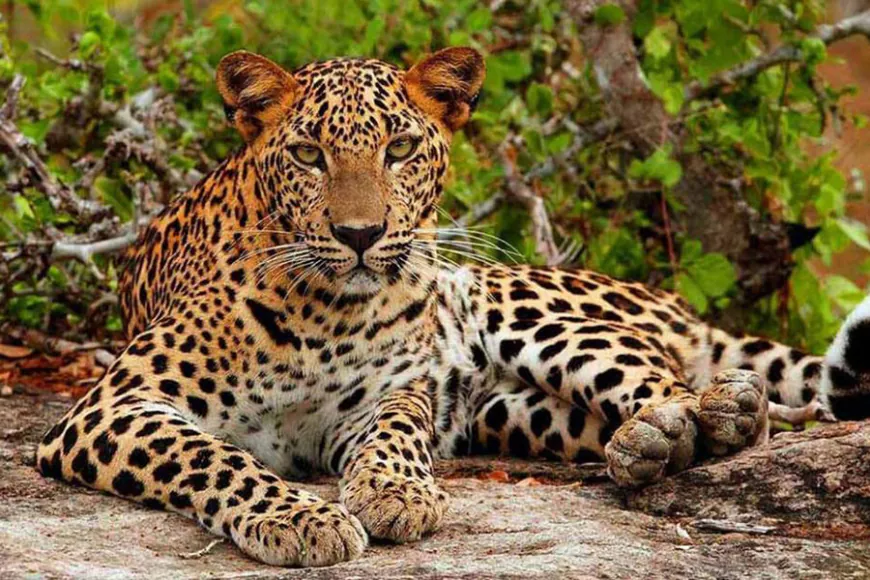
Table of Contents
-
Yala: Sri Lanka's Safari Paradise

Yala National Park, Sri Lanka's most popular wildlife sanctuary, is renowned for its high density of leopards and diverse ecosystem. As reported by Salt in our Hair, this vast park in the southeast of the country offers visitors the chance to spot a wide variety of animals, including elephants, crocodiles, and numerous bird species, making it a must-visit destination for wildlife enthusiasts and nature lovers alike.
-
Sri Lanka's Wildlife Gem
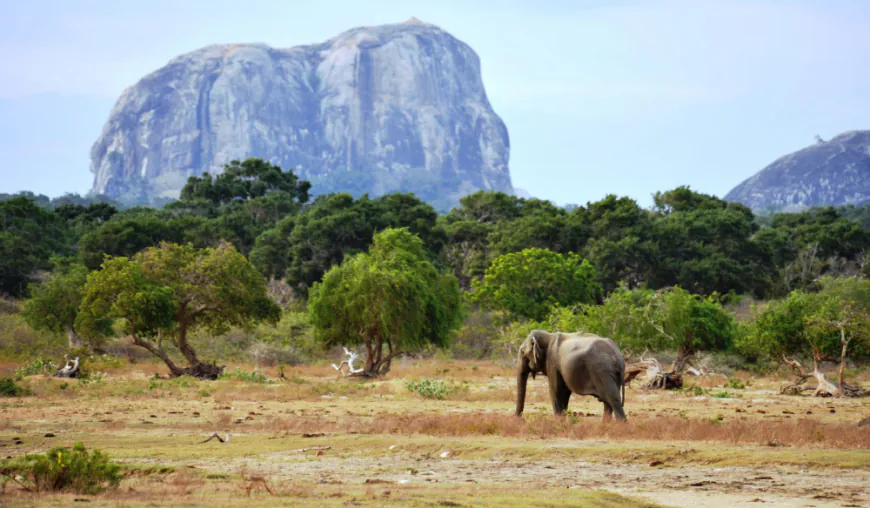
Yala National Park is Sri Lanka's most visited and second-largest national park, covering an area of 979 square kilometers (378 sq mi) in the southeast region of the country. Here are key points about the park's significance and overview:
- Designated as a wildlife sanctuary in 1900 and established as one of Sri Lanka's first two national parks in 1938
- Consists of five blocks, with only two currently open to the public
- Located about 300 km (190 mi) from Colombo
- Renowned for its variety of wild animals and high density of leopards
- Important for the conservation of Sri Lankan elephants and aquatic birds
- Features diverse ecosystems including moist and dry monsoon forests, semi-deciduous forests, thorn forests, grasslands, freshwater and marine wetlands, and sandy beaches
- Home to 215 bird species (including 7 endemic to Sri Lanka) and 44 mammal species
- Attracts numerous visitors, contributing significantly to Sri Lanka's tourism industry and local economy
- Offers a unique opportunity for wildlife viewing, with no two game drives being the same due to its biodiversity
- Contains sites of cultural and religious significance, including ruins of ancient civilizations and jungle monasteries
Yala National Park's rich biodiversity, conservation efforts, and cultural heritage make it a premier wildlife destination in Sri Lanka, offering visitors a chance to experience the country's natural wonders while supporting local communities and conservation initiatives.
-
Park Overview and History
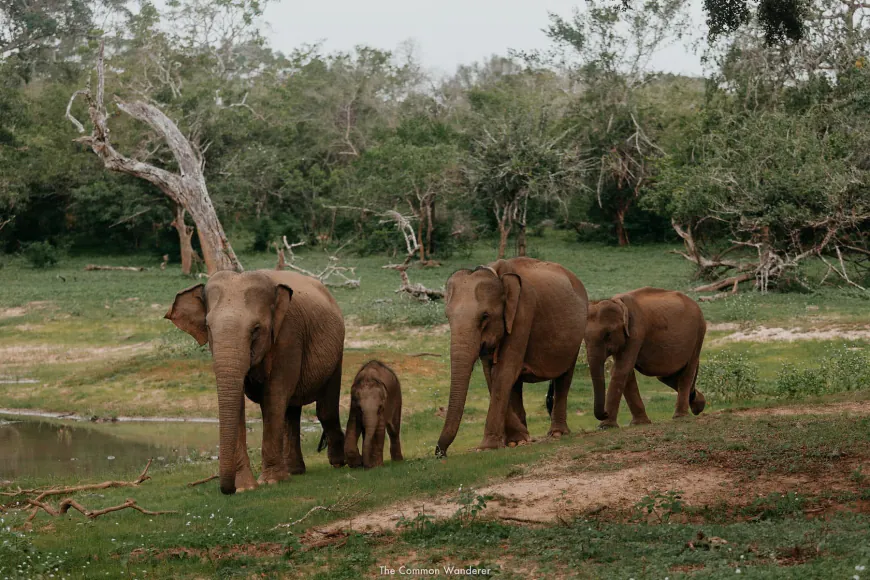
Yala National Park, located in the southeastern region of Sri Lanka, is a diverse and expansive wildlife sanctuary that offers visitors a unique glimpse into the country's natural heritage. The park's geographic layout, rich history, and varied climate contribute to its status as a premier wildlife destination.
Aspect Details Location Southeastern Sri Lanka, bordering the Indian Ocean Provinces Southern Province and Uva Province Total Area 979 square kilometers (378 sq mi) Distance from Colombo Approximately 300 kilometers (190 mi) Number of Blocks 5 blocks, with 2 currently open to the public Adjacent Parks Kumana National Park ('Yala East') and Lunugamvehera National Park Yala National Park was initially designated as a wildlife sanctuary in 1900, along with Wilpattu, and was officially established as one of Sri Lanka's first two national parks in 1938. The park's historical significance extends beyond its conservation status, as it contains several important cultural and religious sites. Two notable Buddhist pilgrim sites, Sithulpahuwa and Magul Vihara, are located within the park boundaries. These ancient sites, along with man-made tanks such as Maha Seelawawa and Buthawa Tank, provide evidence of the area's rich cultural heritage and past civilizations.
The park plays a crucial role in wildlife conservation, particularly for Sri Lankan elephants and aquatic birds. It is home to 44 varieties of mammals and 215 bird species, of which six are endemic to Sri Lanka. Yala boasts one of the highest leopard densities in the world, making it a key habitat for the conservation of these magnificent creatures.
Yala National Park experiences a dry semi-arid climate, with temperatures ranging from 26.4°C (79.5°F) in January to 30°C (86°F) in April. The park receives most of its rainfall during the northeast monsoon from September to December. The best time to visit Yala for wildlife viewing is during the dry season, typically from February to July. During this period, water levels in the park are lower, making it easier to spot animals as they gather around water sources.
It's worth noting that the park is generally closed in September each year for maintenance and animal simulation activities. Visitors should also be aware that weekends can be particularly crowded, so weekday visits are recommended for a less congested experience.
-
Wildlife and Weather Patterns
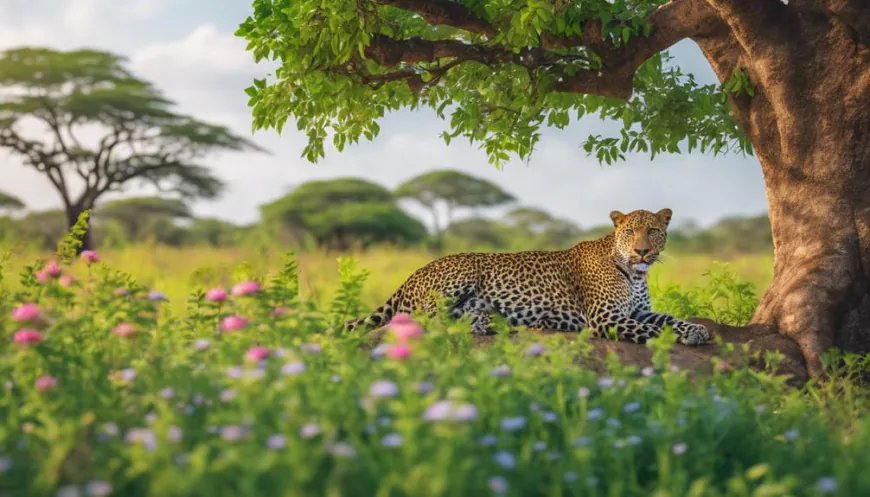
Yala National Park experiences a semi-arid climate with distinct wet and dry seasons, influencing the best times for wildlife viewing. Here's an overview of the park's climate and recommended visiting periods:
Season Months Characteristics Wildlife Viewing Dry Season February - July Low rainfall, temperatures 26-33°C (79-91°F) Excellent, animals gather at water sources Wet Season September - December Northeast monsoon, higher rainfall Challenging, lush vegetation limits visibility Shoulder Season August, January Transitional periods Good, fewer tourists The dry season from February to July is considered the best time to visit Yala National Park for wildlife viewing. During this period, water levels in the park are lower, causing animals to congregate around remaining water sources, making them easier to spot. The peak season for leopard sightings is February and March.
Yala National Park boasts a diverse array of ecosystems, supporting a rich variety of flora and fauna:
- Dry monsoon forests: Characterized by drought-resistant trees and shrubs.
- Grasslands and savannah: Open areas supporting grazing animals.
- Wetlands and waterholes: Crucial for wildlife during dry seasons.
- Marine and coastal areas: Featuring sandy beaches and lagoons.
The park is home to numerous notable wildlife species:
- Sri Lankan leopards: Yala has one of the highest leopard densities in the world, with 40-50 individuals in the park.
- Elephants: A population of 250-300 elephants resides in Yala.
- Sloth bears: Often seen climbing Pallu trees for fruit between April and June.
- Spotted deer and sambar: Common prey species for predators.
- Crocodiles and reptiles: Found in the park's water bodies.
- Bird species: 215 species recorded, including 7 endemic to Sri Lanka.
Yala National Park also harbors rare and endemic plant species, contributing to its ecological importance. However, the park faces several conservation challenges:
- Anti-poaching measures: Efforts to protect endangered species from illegal hunting.
- Human-wildlife conflict mitigation: Strategies to reduce conflicts between local communities and wildlife.
- Habitat restoration projects: Initiatives to maintain and improve the park's diverse ecosystems.
These conservation efforts are crucial for preserving Yala's rich biodiversity and ensuring its continued role as a premier wildlife destination in Sri Lanka.
-
Safari Options and Etiquette
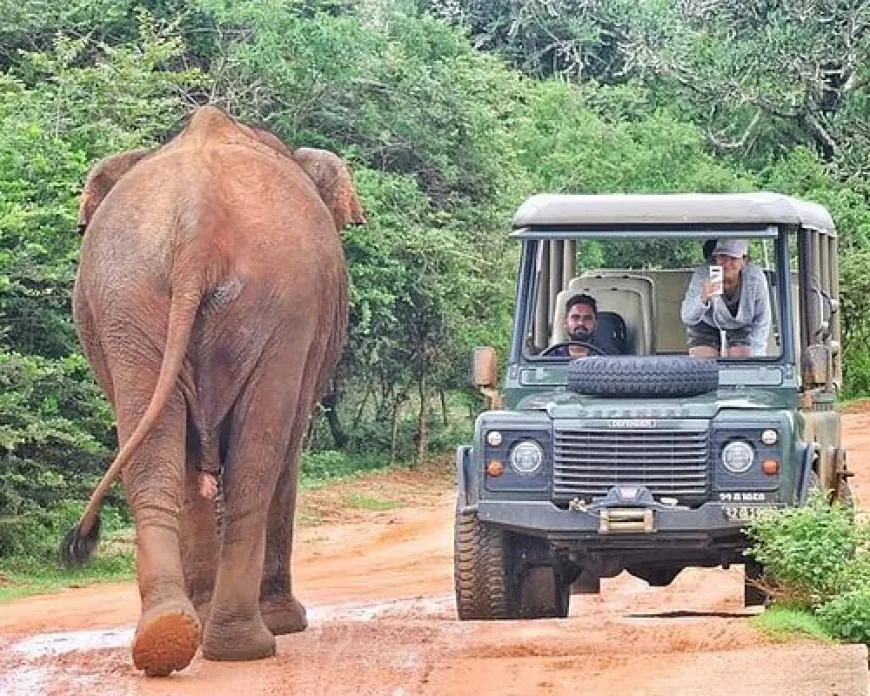
Yala National Park offers a variety of safari experiences to suit different preferences and interests. Here's an overview of the safari options available and important information for visitors:
Safari Type Description Duration Best For Half-Day Morning Safari Early morning wildlife viewing 3 hours (4:30 AM - 10:00 AM) Best chance to see animals Half-Day Afternoon Safari Late afternoon wildlife viewing 3 hours (2:00 PM - Sunset) Avoiding midday heat Full-Day Safari Extended wildlife viewing 12 hours (4:30 AM - 6:00 PM) Maximizing animal sightings Overnight Safari Includes accommodation in the park 24+ hours Immersive experience Jeep safaris are the most popular option for exploring Yala National Park. These safaris typically accommodate up to 6 people per vehicle and include hotel pick-up and drop-off from the Tissamaharama area.
The best times for safari rides are early morning and late afternoon when animals are most active. Morning safaris offer the highest chance of spotting wildlife, especially elusive species like leopards. Full-day safaris provide the most comprehensive experience, allowing visitors to explore different areas of the park and increase their chances of diverse animal sightings.
Safari etiquette and guidelines are crucial for ensuring a safe and respectful experience:
- Remain quiet and avoid sudden movements to prevent disturbing wildlife
- Stay inside the vehicle at all times unless instructed otherwise by your guide
- Do not feed or attempt to touch any animals
- Follow your guide's instructions and park regulations
For wildlife photography enthusiasts:
- Bring a camera with a good zoom lens (at least 300mm) for capturing distant animals
- Use a fast shutter speed to freeze motion in low light conditions
- Consider bringing a bean bag or monopod for stability in the jeep
- Be patient and ready to capture fleeting moments
When booking a safari, it's advisable to choose a reputable tour operator with experienced guides who can enhance your wildlife viewing experience and ensure compliance with park regulations. Remember that wildlife sightings are unpredictable, and each safari is unique, so manage your expectations accordingly.
-
Lodging and Amenities
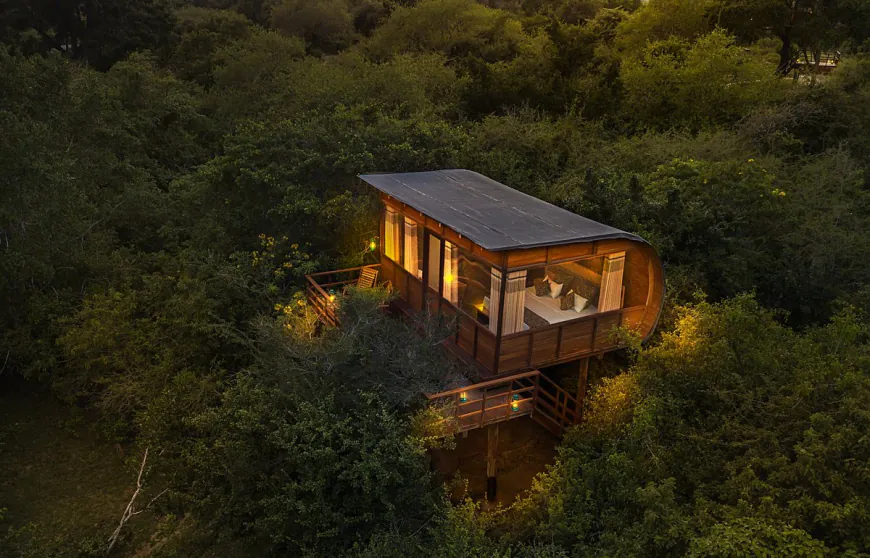
Yala National Park offers a range of accommodation options to suit various preferences and budgets, from camping sites within the park to luxury resorts in the surrounding area. Here's an overview of the available lodging and dining facilities:
A. Camping Sites within the Park
Yala National Park provides camping opportunities for visitors seeking a more immersive nature experience. However, specific information about camping sites within the park is limited in the provided sources.
B. Bungalows and Eco-lodges
Yala National Park offers several bungalows inside the park, providing a unique opportunity to stay close to nature. These bungalows are managed by the park authorities and have varying rates depending on the duration of stay:
Bungalow Name First Night (LKR) Second Night (LKR) Third Night (LKR) Warahena 8,008 14,504 21,000 Mahasilawa 8,008 14,504 21,000 Ondaatje 6,888 12,264 17,640 Heenwewa 5,768 10,024 14,280 New Buthawa 8,008 14,504 21,000 Thalgasmankada 5,768 10,024 14,280 Old Buthawa 8,008 14,504 21,000 These bungalows can be booked online up to 3 consecutive days, and they can accommodate groups of 10 or more depending on availability.
C. Nearby Hotels and Resorts
The area surrounding Yala National Park offers a variety of luxury hotels and resorts catering to different preferences:
- Uga Chena Huts: A 5-star luxury resort located just 5 minutes from Yala National Park, featuring free WiFi, a spa center, and an outdoor pool.
- Wild Coast Tented Lodge: A luxury tented camp situated where the jungle meets a pristine beach, offering unique arched fabric structures and views of the Indian Ocean.
- Hilton Yala Resort: Located 21 km from Situlpawwa, this resort features a fitness center, garden, terrace, restaurant, and private beach area.
- Cinnamon Wild Yala: Situated only a 5-minute drive from Yala National Park, this resort offers an observation deck with a 360° view of the forest and the Indian Ocean.
- Jetwing Yala: Spread across 38 acres of land, this hotel features an outdoor pool, business center, and luxurious rooms.
D. Restaurants and Dining Options
While specific information about restaurants and dining options is limited in the provided sources, many of the luxury hotels and resorts near Yala National Park offer on-site dining facilities. For example:
- Wild Coast Tented Lodge includes a restaurant in its amenities.
- Hilton Yala Resort provides a bar and restaurant for guests.
- Cinnamon Wild Yala likely offers dining options as part of its resort experience.
Visitors staying at these resorts can enjoy meals at their accommodation. For those staying in bungalows within the park or at more basic accommodations, it's advisable to check with local tour operators or park authorities for nearby dining options or to consider bringing supplies for self-catering.
When planning a visit to Yala National Park, it's recommended to book accommodations in advance, especially during peak seasons, to ensure availability and the best rates. Additionally, visitors should be aware that rates and availability may change, so it's advisable to confirm details directly with the park office or accommodation providers before making reservations.
-
Transportation and Access
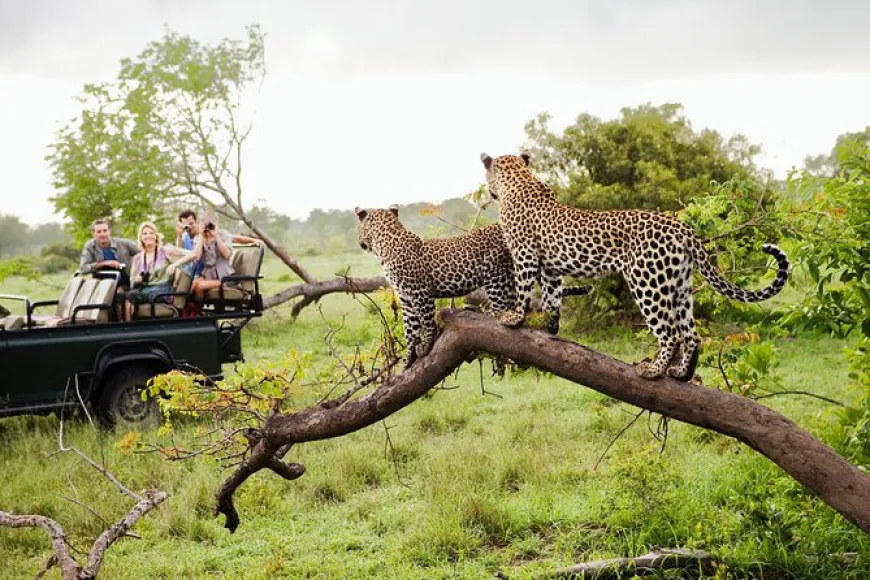
Yala National Park is located in the southeastern part of Sri Lanka, and there are several ways to reach this popular wildlife destination. Here's an overview of how to get to Yala National Park:
Transportation Method Details Travel Time Distance By Air Fly to Hambantota - Mattala Rajapaksa International Airport 45-minute flight from Colombo N/A By Train Train from Colombo Fort Station to Haputale 9 hours N/A By Road (Car) Drive from Colombo Airport via Southern Expressway 6-7 hours 300+ km By Road (Bus) Bus from Colombo Bastian Mawatha Bus Terminal to Kataragama 8 hours N/A A. Nearest Cities and Airports
The nearest major city to Yala National Park is Hambantota. The closest airport is Hambantota - Mattala Rajapaksa International Airport, which is about a 45-minute drive from the park.
B. Transportation Options
-
By Air: Fly from Bandaranaike International Airport (Colombo) to Hambantota - Mattala Rajapaksa International Airport. This is the fastest way to reach Yala, with a flight time of about 45 minutes.
-
By Train: Take a train from Colombo Fort Station to Haputale. Trains depart at 9:45 AM and 8:00 PM daily. The journey takes about 9 hours.
-
By Road:
- Private Car: This is the most convenient option. The journey from Colombo Airport to Yala takes about 6-7 hours via the Southern Expressway.
- Bus: Take a bus from Colombo Bastian Mawatha Bus Terminal to Kataragama, which takes about 8 hours.
C. Approximate Travel Times and Distances
- From Colombo to Yala: Approximately 300 km, 6-7 hours by car.
- From Bandaranaike International Airport to Yala: About 6 hours by car.
- From Hambantota - Mattala Rajapaksa International Airport to Yala: About 45 minutes by car.
- Train journey from Colombo to Haputale: 9 hours.
- Bus journey from Colombo to Kataragama: 8 hours.
It's important to note that while there are multiple options to reach Yala National Park, most visitors prefer to travel by car due to the convenience and flexibility it offers. Many hotels and tour operators can arrange transportation from major cities or airports to the park.
-
-
Essential Visitor Information
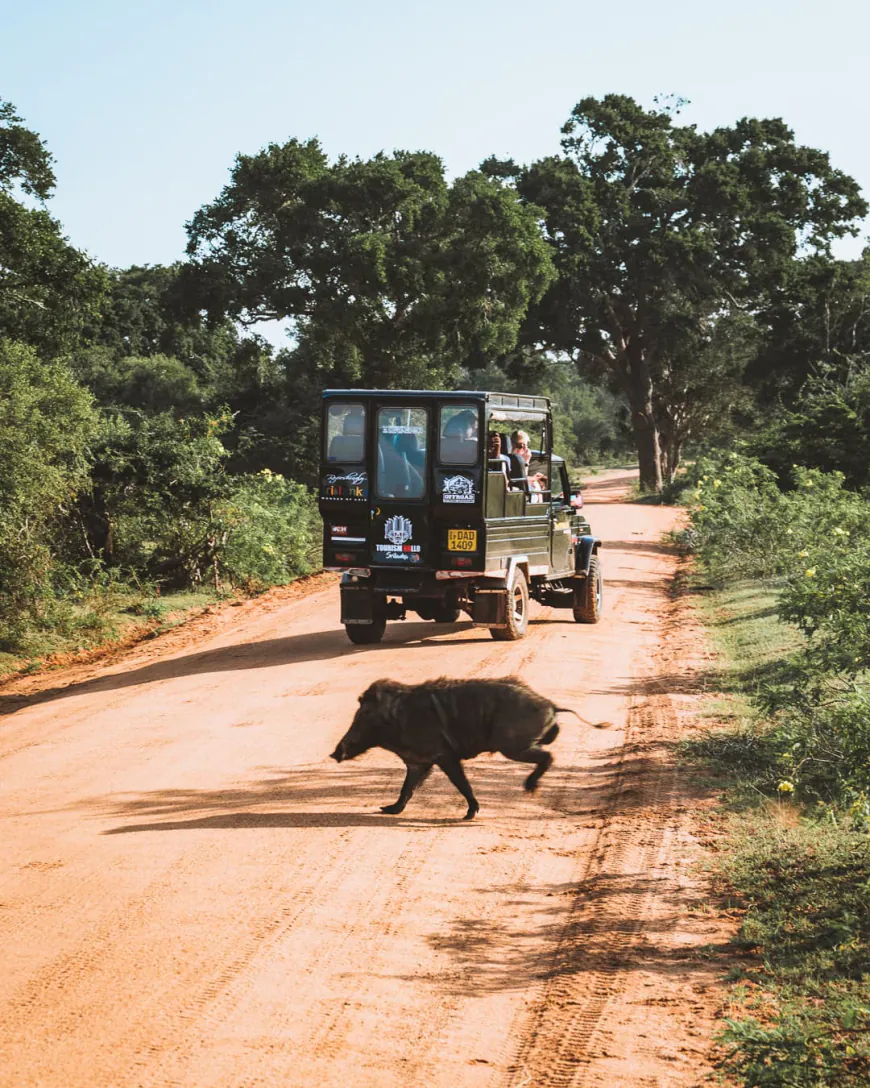
Yala National Park has specific entry fees and guidelines for visitors to ensure a safe and enjoyable experience while protecting the park's ecosystem. Here's an overview of essential information for visitors:
A. Park Entry Fees and Permits
Yala National Park has different entry fees for foreign and local visitors, with variations based on age and peak/off-peak seasons:
Visitor Category Peak Season Off-Peak Season Foreign Adult (12+) $25 $20 Foreign Child (6-12) $15 $10 SAARC Country Adult (12+) $20 $15 SAARC Country Child (6-12) $10 $8 Local Adult (12+) Rs. 100 Rs. 100 Local Child (6-12) Rs. 50 Rs. 50 Note: All tickets are subject to an additional 15% VAT, service charges, and other taxes. Entrance fees must be paid at the park entrance gate, and park officials can assist with purchasing tickets.
B. Recommended Clothing and Gear
- Wear comfortable, breathable clothing in neutral colors
- Bring a hat, sunglasses, and sunscreen for sun protection
- Pack insect repellent to ward off mosquitoes and other insects
- Bring a refillable water bottle to stay hydrated
- Carry binoculars for better wildlife viewing
- Bring a camera with a zoom lens for wildlife photography
C. Health and Safety Precautions
- Stay inside the vehicle at all times during safaris
- Follow your guide's instructions and park regulations
- Bring any necessary medications, especially for allergies or pre-existing conditions
- Stay hydrated and protect yourself from the sun
- Be aware of your surroundings and avoid approaching or feeding wildlife
D. Responsible Tourism Practices
-
Minimizing Environmental Impact:
- Do not litter; carry all trash with you and dispose of it properly
- Stick to designated paths and areas to avoid damaging vegetation
- Use eco-friendly products when possible
-
Supporting Local Communities:
- Consider using local guides and tour operators
- Purchase souvenirs from local artisans
- Respect local customs and traditions
-
Respecting Wildlife and Park Rules:
- Observe animals quietly and from a safe distance
- Do not use flash photography, which can disturb wildlife
- Adhere to park opening hours (generally 6 am to 6 pm)
- Follow guidelines on safari duration and vehicle capacity
By following these guidelines, visitors can help preserve Yala National Park's unique ecosystem while enjoying a memorable wildlife experience. Remember that the park may be closed in September for maintenance, so plan your visit accordingly. Weekday visits are recommended to avoid crowds, especially during peak seasons.
-
Nearby Wildlife Destinations
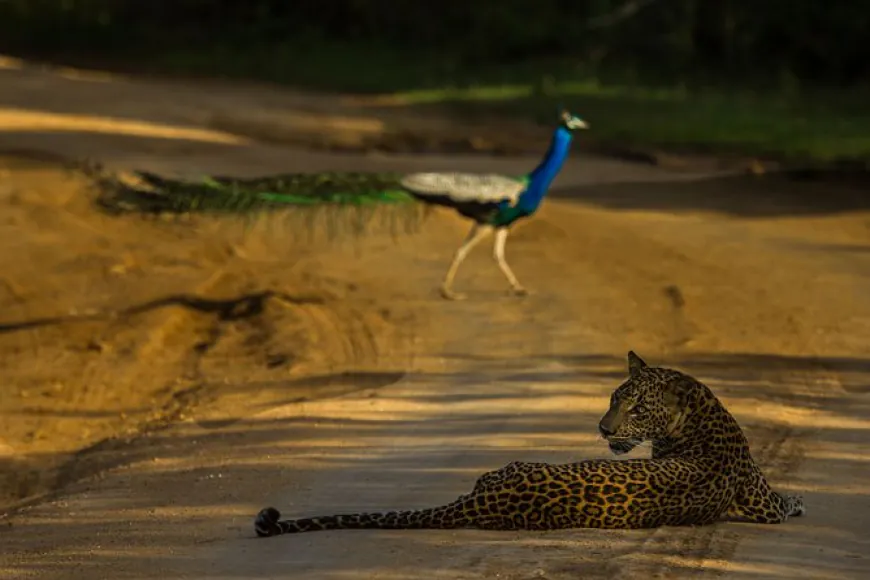
Yala National Park is surrounded by several other attractions that offer unique experiences for visitors. Here's an overview of nearby destinations that can complement your Yala safari adventure:
A. Bundala National Park
Bundala National Park, located about 20 km west of Yala, is a fantastic maze of waterways, lagoons, and dunes that provides a haven for diverse wildlife, especially birds.
Feature Details Area 6,216 hectares Established 1969 (as a sanctuary), 1993 (as a national park) Designation Ramsar site (1990), UNESCO Biosphere Reserve (2005) Bird Species Nearly 200 species, including 58 migratory Best Time to Visit October to May (peak in December) Bundala is renowned for its birdlife, with up to 2,000 greater flamingos recorded at one time. It's also home to elephants, civets, giant squirrels, and crocodiles. Between October and January, four of Sri Lanka's five species of marine turtles lay their eggs on the coast.
B. Udawalawe National Park
While not mentioned in the provided sources, Udawalawe National Park is another popular wildlife destination near Yala, known for its large elephant population.
C. Kataragama Sacred City
Kataragama is a pilgrimage town sacred to Buddhist, Hindu, Muslim, and indigenous Vedda people of Sri Lanka. While not extensively covered in the provided sources, it's a significant cultural site near Yala National Park.
D. Kirinda Beach and Temple
Kirinda Beach is located near Yala National Park and features a temple, though specific details are not provided in the given sources.
Additional Nearby Attractions:
-
Sithulpahuwa and Magul Vihara: These are two Buddhist pilgrim sites located within Yala National Park, offering historical and cultural significance.
-
Kumana National Park: Also known as 'Yala East', this park is adjacent to Yala and offers additional wildlife viewing opportunities.
-
Lunugamvehera National Park: Another adjacent park to Yala, providing more options for nature enthusiasts.
When Planning Side Trips, Consider the Following:
-
Bundala National Park is open year-round, but the best time to visit is from October to May, with December being the peak month for migratory birds.
-
Foreign adult entry fees for Bundala are approximately 7,500 Sri Lankan Rupees (as of May 2022), with discounts for children.
-
A half-day safari jeep at Bundala costs around 40-45 USD, while a full-day safari is about 85-90 USD.
These nearby attractions offer diverse experiences, from bird watching and wildlife safaris to cultural and historical sites, allowing visitors to explore more of Sri Lanka's rich natural and cultural heritage while based near Yala National Park.
-
-
Yala's Lasting Impression
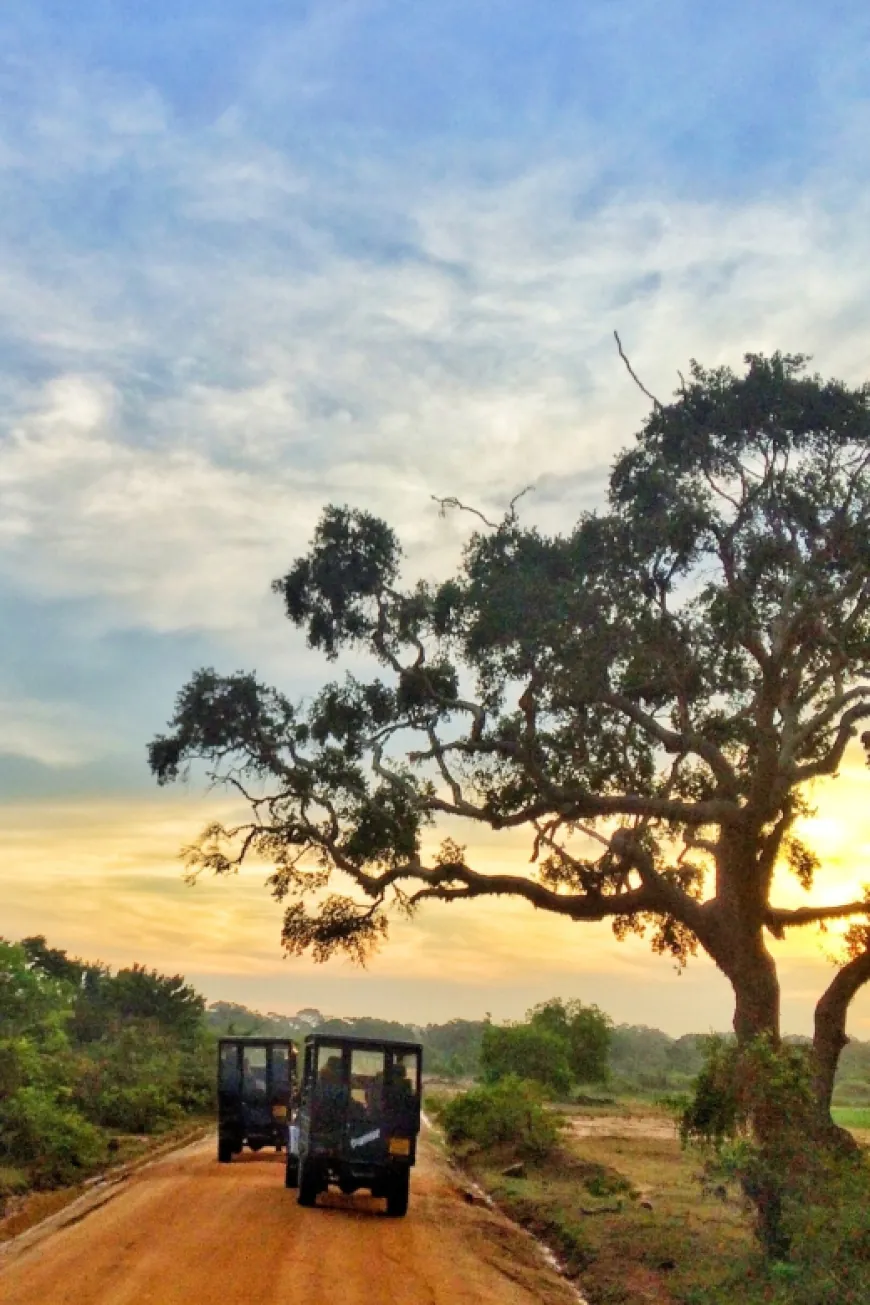
Yala National Park stands out as a premier wildlife destination in Sri Lanka, offering visitors a unique and unforgettable safari experience. Here's a recap of what makes Yala special and why you should consider visiting:
- Home to one of the highest leopard densities in the world, making it a top spot for big cat enthusiasts.
- Diverse ecosystems including moist and dry monsoon forests, grasslands, and marine wetlands, supporting a wide variety of flora and fauna.
- 215 bird species, including 7 endemic to Sri Lanka, making it a paradise for birdwatchers.
- 44 mammal species, including Sri Lankan elephants, sloth bears, and various deer species.
- Rich cultural heritage with ancient Buddhist sites like Sithulpahuwa and Magul Vihara within the park boundaries.
- Offers various safari options, from half-day tours to immersive overnight experiences.
- Contributes significantly to Sri Lanka's tourism industry and local economy.
To experience Yala's wonders responsibly:
- Choose reputable tour operators with experienced guides who prioritize animal welfare and conservation.
- Follow park rules and safari etiquette, such as remaining quiet and not feeding wildlife.
- Support local communities by using local guides and purchasing locally-made souvenirs.
- Practice sustainable tourism by minimizing your environmental impact and respecting wildlife.
- Consider visiting during the dry season (February to July) for optimal wildlife viewing, but be prepared for crowds.
- Book accommodations in advance, especially during peak seasons, to ensure availability.
By visiting Yala National Park responsibly, you not only create lasting memories but also contribute to the conservation of this unique ecosystem and support local communities. The park's blend of diverse wildlife, stunning landscapes, and cultural significance makes it a must-visit destination for nature lovers and adventure seekers alike.
-
Connect with Yala
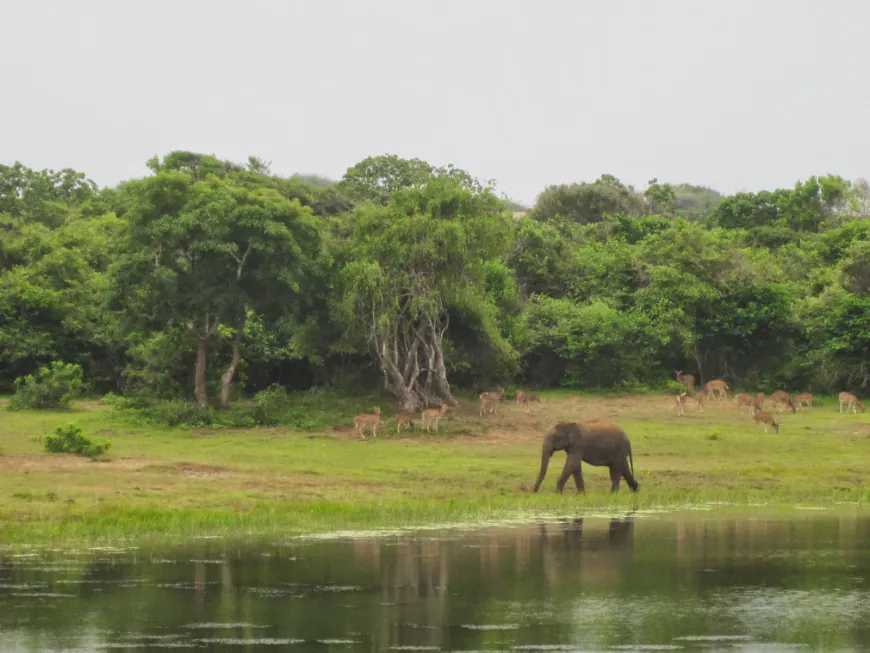
To enhance your Yala experience and stay updated on the latest news, wildlife sightings, and conservation efforts, we encourage you to:
- Subscribe to our newsletter for exclusive updates and insider tips.
- Follow us on social media platforms for stunning wildlife photography and real-time park information.
- Share your Yala experiences and photos on our blog or social media channels.
- Contact us for personalized trip planning assistance or additional information.
Get in Touch with Us:
- Email: [email protected]
- Website: yalalk.com
- Phone: +94723456726
We value your feedback and experiences. Please feel free to comment on our blog posts or share our articles to help spread awareness about Yala National Park's incredible biodiversity and conservation efforts.
By staying connected, you'll not only enhance your own Yala experience but also contribute to the park's ongoing conservation efforts and support local communities. Join our community of wildlife enthusiasts and nature lovers today!
What's Your Reaction?








































